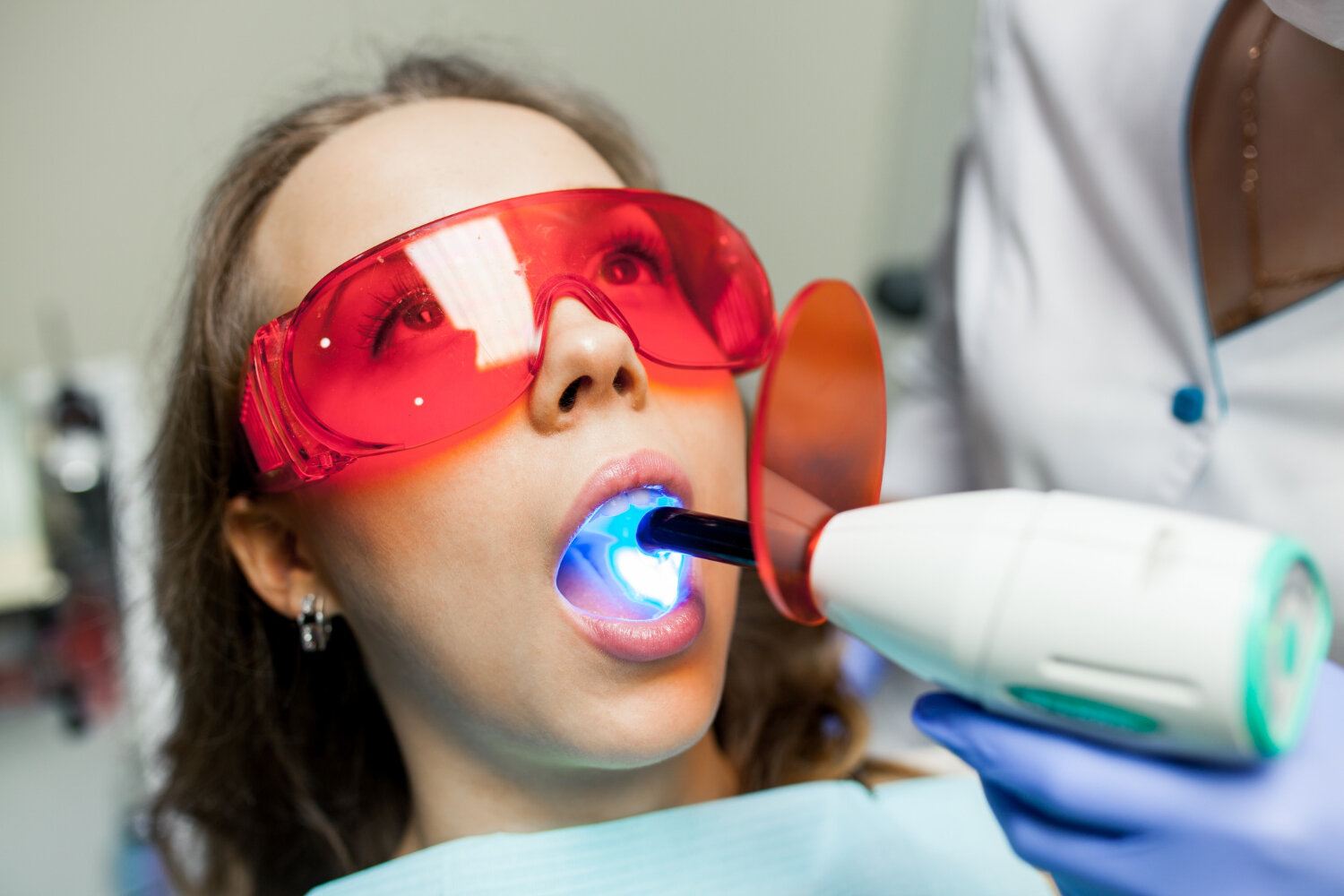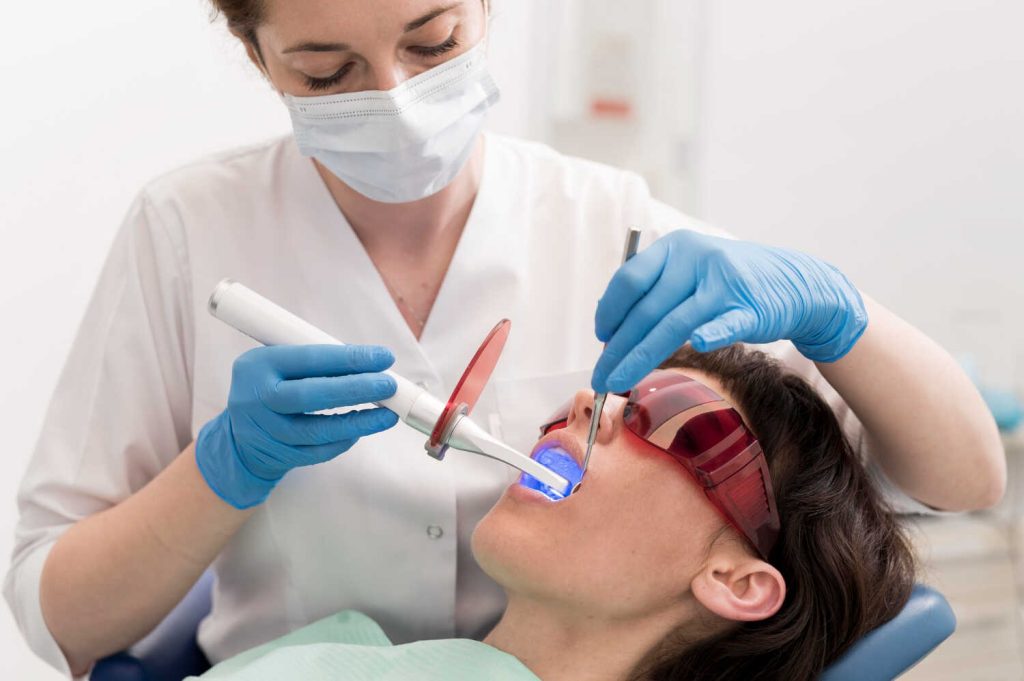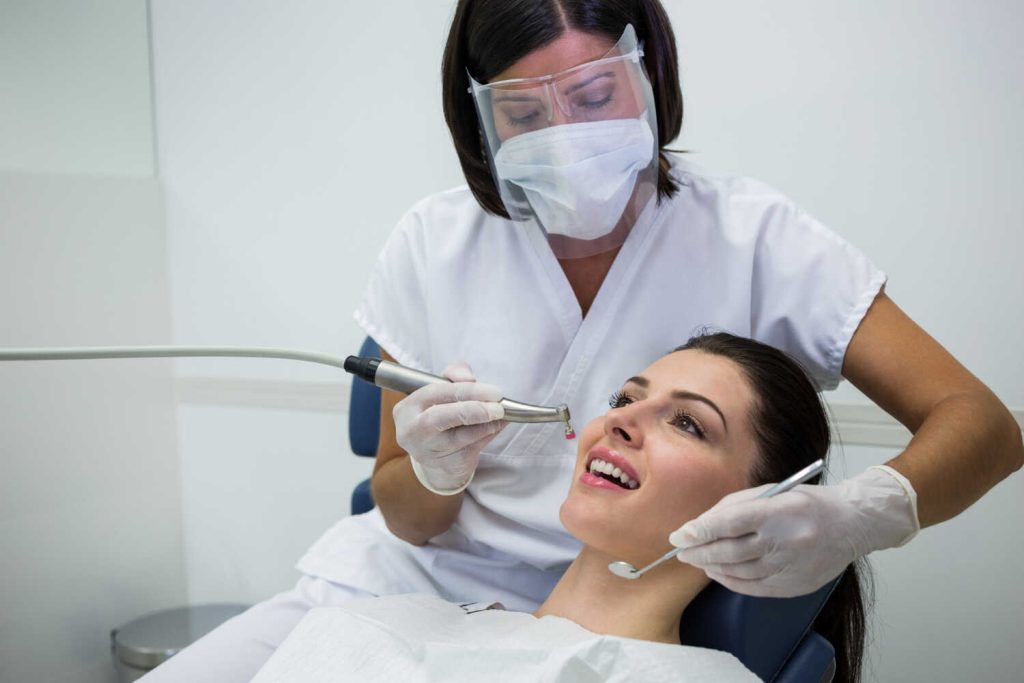Introduction
Laser teeth whitening performed by dentists offers a high-tech way to quickly achieve dramatic brightening of stained and discolored smiles. Lasers enhance the effects of whitening gels for faster, more intense results. But with various types of dental lasers available, what are the best laser teeth whitening methods? we’ll compare different laser whitening systems like BIOLASE, Waterlase, Epic 10, and Dental Laser Smiles. You’ll learn how laser light accelerates bleaching, what laser teeth whitening procedures involve, and their effectiveness for stain removal. With this guide, you’ll understand the advantages of advanced in-office laser whitening.
How Does Laser Light Whiten Teeth?
Laser teeth whitening uses a concentrated peroxide-based bleaching gel paired with the application of laser energy to speed up the whitening process dramatically. The laser light serves several purposes:
- Penetrates Deeper – The laser light penetrates enamel and dentin faster and deeper than whitening gel alone. This allows more thorough bleaching of intrinsic stains.
- Activates Peroxide – Laser wavelengths specifically targeted to the blue range optimize the oxidizing and bleaching chemical reactions of hydrogen peroxide on stains.
- Dries Teeth – Laser energy helps dehydrate teeth to allow deeper diffusion and action of whitening gel into enamel.
- Raises Temperature – Lasers slightly warm the outer enamel surface which accelerates decomposition of staining molecules by the peroxide.
- Enhances Gel Effects – Laser light and heat speed up and intensify the stain-lifting effects of the bleaching gel.
With these synergistic mechanisms, laser activation allows dramatically faster and better penetration of whitening ingredients for visibly whiter teeth in less time.
Types of Lasers Used in Teeth Whitening
The most common dental lasers used to enhance and activate professional teeth whitening gels include:
- Argon Lasers: Produce blue light at 488 nm wavelength which is absorbed by the yellow pigments in stains. Argon lasers increase peroxide action up to ten times faster than whitening gel alone.
- CO2 Lasers: Thermal carbon dioxide lasers heat up the outer enamel to allow rapid diffusion of peroxides. Their 10,600 nm infrared wavelength is well-absorbed by dental hydroxyapatite.
- Diode Lasers: Diode lasers generate targeted wavelengths like 660 nm red light that strongly absorbs into enamel and boosts chemical whitening reactions.
- LED Lasers: LED systems produce a narrow range of blue wavelengths that enhance bleaching but do not heat up teeth. LED whitening lights are most common in dental offices.
- YSGG Lasers: These yttrium lasers operate at 2,790 nm in the infrared which penetrates enamel and promotes oxidation of stains by peroxides.
Dentists select the optimal laser wavelength and power settings to activate bleach gels for maximum whitening with minimal sensitivity. Advanced control panels on dental lasers allow precise adjustment of settings.
How Does Laser In-Office Whitening Work?
A typical in-office laser teeth whitening session involves these steps:
- Pretreatment exam to identify any oral health issues.
- Whitening gel applied to teeth.
- Custom laser light device positioned over teeth.
- Repeated light activation and gel reapplication for 20-30 minutes total.
- Rinsing away gel and checking results.
- Repeat light sessions as needed for desired whiteness.
- Desensitizing treatment to teeth afterward to prevent sensitivity.
With several rounds of laser light exposure on the concentrated whitening gel, optimal oxidation of stains is achieved quickly and comfortably in one visit.
Effectiveness of Laser Whitening for Stain Removal
Clinical studies on various laser whitening systems like BIOLASE and others prove their dramatic lightening abilities:
- Up to 10 shades whiter in one 60-minute session.
- Lightens both extrinsic and intrinsic stains in enamel and dentin.
- 76% reduction in discoloration according to clinical chromatic measures.
- Increased patient satisfaction versus non-laser whitening methods.
- Results last 12-36 months with periodic touch-ups.
Laser whitening achieves noticeably whiter teeth compared to strips, trays, or non-activated in-office systems alone. The light energy combined with advanced peroxide gels provides powerful stain removal with less risk of sensitivity.
The Pros and Cons of Laser Whitening
Laser teeth whitening offers advantages but also some potential drawbacks:
Advantages:
- Fast visible results in one visit.
- Removes stubborn stains better.
- Can whiten tetracycline staining.
- Little to no sensitivity during or after.
- Long-lasting with periodic touch-ups.
Disadvantages:
- Higher cost than other methods.
- Gums may become irritated.
- Not suitable for some dental conditions.
- Results still degrade over time.
- Repeating too soon can damage enamel.
Ideal Candidates for Laser Whitening
The best candidates for in-office laser teeth whitening include:
- People with moderate to severe extrinsic staining or yellowing.
- Those with intrinsic discoloration in dentin beneath enamel.
- Individuals with childhood tetracycline staining.
- People wanting fast whitening, often for an event.
- Anyone seeking minimal sensitivity during treatment.
- Patients wanting longer lasting whitening results.
Laser whitening can benefit most people with stained teeth seeking dramatic brightening safely with less discomfort in one office visit.
Maintenance and Touch-Ups
While laser whitening provides enduring results, periodic touch-ups help maintain your white smile. Options include:
- Take-home whitening trayws from your dentist.
- Over-the-counter whitening strips or gels.
- Follow-up in-office laser sessions once or twice annually.
- Professional dental cleanings every 6 months.
- Avoiding dark staining foods and drinks.
Conclusion
Advanced laser light activation paired with concentrated bleaching gels allows dentists to dramatically whiten your smile in one rapid yet comfortable office visit. Laser teeth whitening provides unparalleled brightening of moderate to severe stains for optimal, longer-lasting results. Consult our dental professionals to determine if you are a candidate for high-tech laser teeth whitening procedures.





